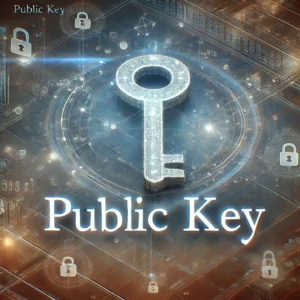What is a Private Key & Public Key?
If you’re new to crypto in Canada, you’ve probably come across the terms private key and public key. These two pieces of information are the foundation of how cryptocurrency works. Whether you’re mining coins or sending and receiving crypto, understanding these keys is essential.
What is a Private Key?
A private key is a long string of letters and numbers that acts like a password to access your cryptocurrency. It proves that you are the owner of the coins and allows you to spend or transfer them. If someone else gets access to your private key, they can take your crypto. There’s no reset button or support hotline in crypto. Once it’s gone, it’s gone.
For example, if you’re mining Ravencoin and store your coins in a wallet, that wallet is protected by your private key. Lose that key, and you lose access to your coins—forever.
Many Canadian miners choose to store their private keys offline using paper wallets or hardware wallets like Ledger or Trezor. Keeping your private key offline reduces the risk of being hacked or compromised.
What is a Public Key?
A public key is the address you give to others so they can send you cryptocurrency. It is mathematically derived from your private key, but the process only works one way. That means someone with your public key cannot figure out your private key.
Think of it like an email address. You can give it to anyone to receive messages, but they can’t use it to access your inbox. The same applies in crypto. You give your public key to someone, and they can send you funds, but only you (with your private key) can access and spend them.
If you’re mining and want to receive payments from a mining pool, you’ll input your public address into the pool software. That’s how your earnings get sent to your wallet.
How Do Private and Public Keys Work Together?
Here’s how it works at a high level:
-
When you create a wallet, it generates a private key.
-
That private key is used to create a corresponding public key.
-
You can safely share the public key to receive crypto.
-
When crypto is sent to your public key, it’s locked until it is unlocked using your private key.
This system is the basis of public-key cryptography, which secures transactions on the blockchain.
Why This Matters for Canadian Crypto Miners
As a Canadian miner, every coin you mine is sent to a wallet. If you don’t control the private key to that wallet, you don’t control the coins. This is why non-custodial wallets are highly recommended. These wallets give you full access to both your public and private keys.
If you’re storing coins on an exchange like Binance or KuCoin, keep in mind that the exchange holds the private key—not you. If the exchange gets hacked, freezes accounts, or shuts down, you may lose access to your funds.
The rule is simple: not your keys, not your coins.
Quick Summary
| Term | Description | Can You Share It? | Purpose |
|---|---|---|---|
| Private Key | A secret code that gives access to your crypto | No | Spending or transferring coins |
| Public Key | An address people use to send you crypto | Yes | Receiving coins |
Final Thoughts
Whether you’re spec mining the next big altcoin or stacking Ravencoin through a pool, understanding how private and public keys work is crucial to staying safe in crypto. Your keys are your control. Protect them, back them up, and never share your private key with anyone.
Got questions? Leave a comment or check out my Beginner’s Guide to Crypto to get started.
📩 Sign up for our newsletter to stay updated on blockchain trends, crypto mining tips, and more!
